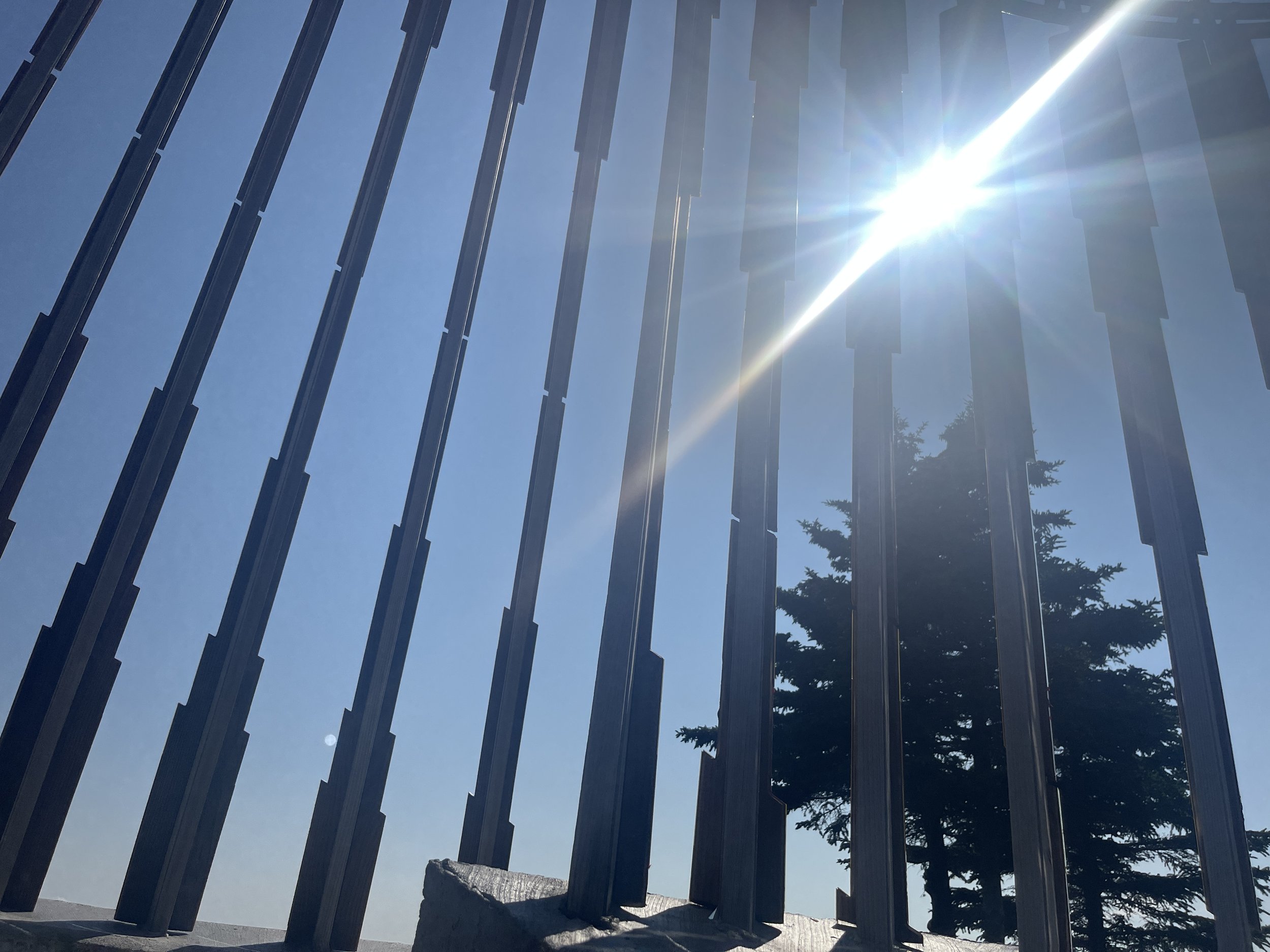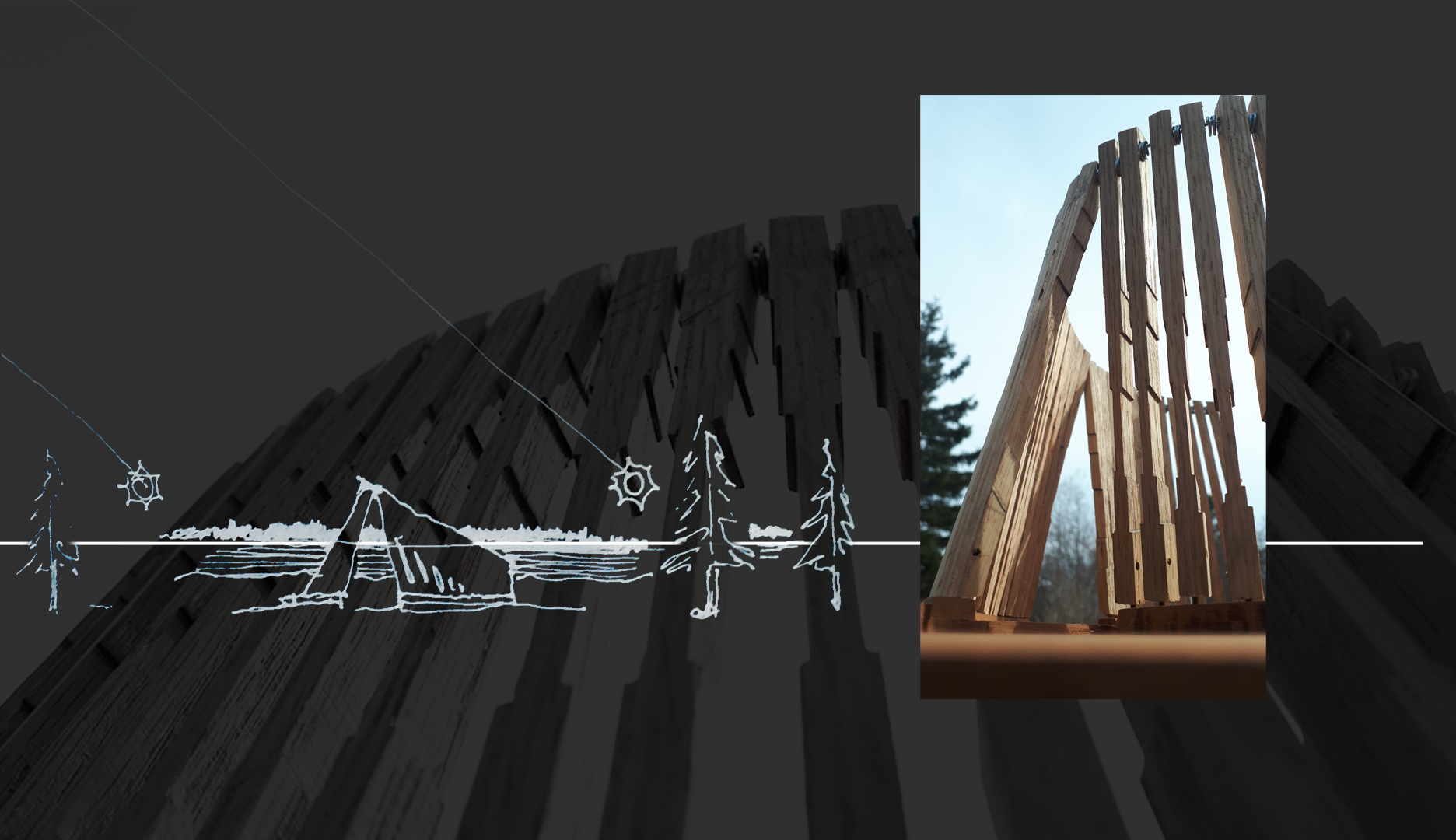How do we relate to the sky?
How does the sky tie us to the sea?
How do we mark the passage of time?
& How do we hold memory?
‘AN OPENING IN THE CANOPY’
a sundial
As time passes, take time. bask in the windswept and tethered to the bedrock; an opening in the canopy looking up to the sky.
This work is located in Pouch Cove; a small coastal community about as far east as you can go in Canada. The community is perched on bluffs above the Atlantic amongst spruce trees with shallow roots systems and wind stunted growth; here life is buffeted by weather, wind, fog, and snow. The community has a history of fishing but has come to welcome opportunities as a rural hub for artistic residents and residencies. It is a community defined by its exposure.
The permanent artwork here is a fully functioning Sundial that incorporates imagery evocative of locale landscapes and regional identity.
THE APPROACH: As one drives into Pouch Cove there is a dense forest of wind stunted spruce trees to either side, pressed tight up against the road or edging the yards which have been kept clear and domesticated for grass. At some point before arriving in town, there is a small break in the dense undergrowth; suddenly on your left there is a small park wedged tightly between a pond which reflects the sky and exposes a view of rolling granite hills beyond. The park is an invitation; an opening.





HOW TO USE THE SUNDIAL:
Instead of a classic sundial which has a sloped gnomon (or vertical metal fin) and casts its shadows on numbers laid out on the ground, this sundial is meant to be walked through. And whereas the classic sundial causes you to look down, this sundial brings your attention up towards the sky.
READING THE DATE AND TIME
Notches - JUNE 21 - 7:34 (+1)
Central Stone - One Minute Past Solar Noon
THE COMPASS ROSE IS “UPSIDE DOWN” BECAUSE WE ARE FACING INTO THE SUN.
Each of the vertical members represents a different time of day. You can tell the time by noting which member is casting its shadow upon the stone in the compass rose located in the center of the concrete slab. Early in the day the sun shines in from the east (hitting the stone from the left) and later in the day from the west (from the right).
Additionally, each of the wooden members has a series of notches that represent the height of the sun at a different time of the year. The highest notch is the summer soltace (when the sun reaches its apex in the sky). The lowest notch is the winter soltace. If you can tell which notch is casting its shadow closest to the central rock, then you can go over to that notch and see writen on the side of it both the current time and approximate date.
The time should be correct to within 5 mins or so, accounting for day light savings time (+1) and fluxucations in the earths orbit as it changes speeds on an elliptical path.
THE IDEA & THE IMAGERY:
THE PROCESS:
![DATUM [LINE]](http://images.squarespace-cdn.com/content/v1/5dfb9f96229544557f36674d/c1069bb5-c601-451e-9467-bb32744b916c/DATUM_Selection_02_Masked+Trial.png?format=750w)








